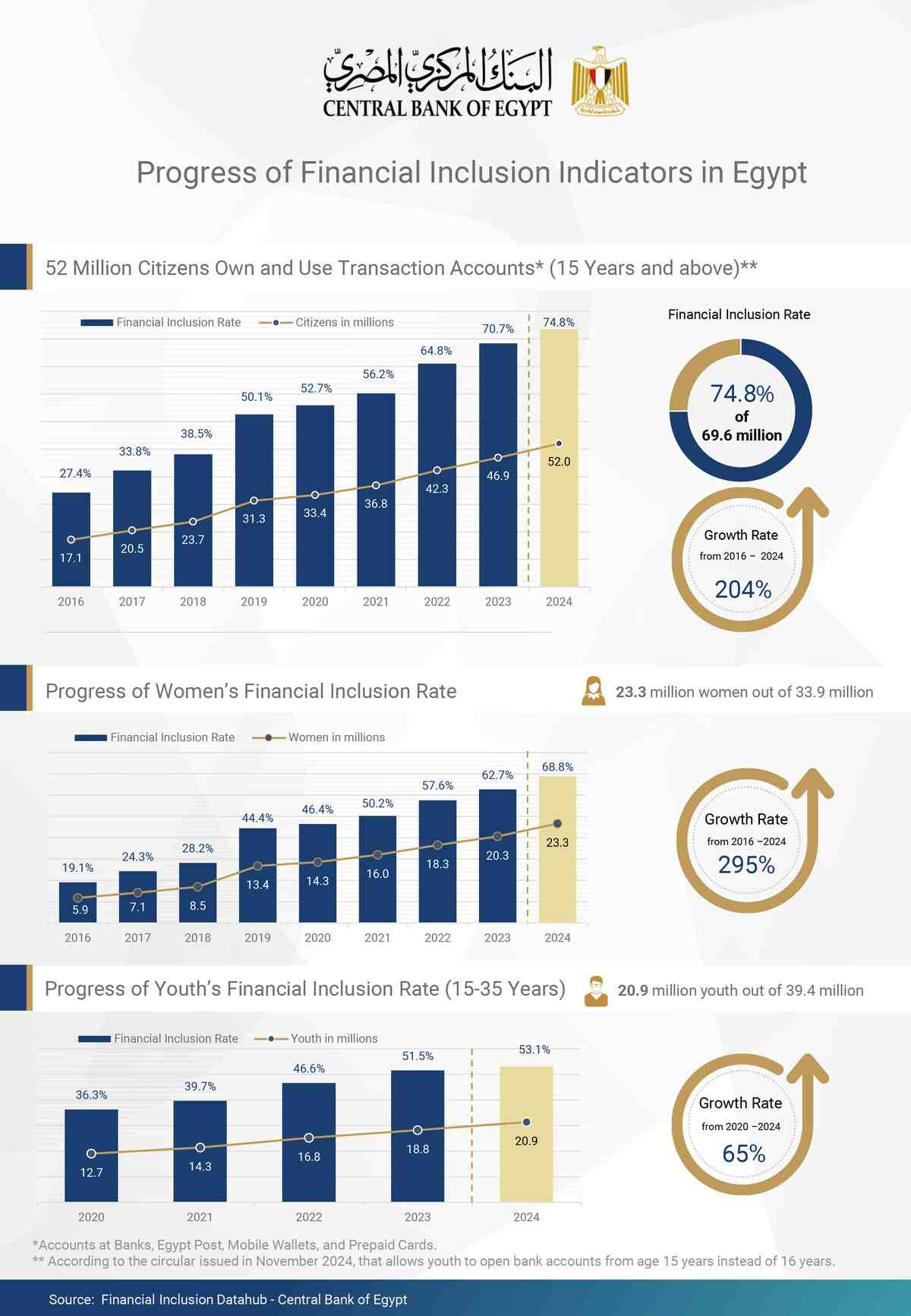Financial inclusion rates in Egypt continue to rise, with approximately 52 million citizens now using transaction accounts.
The Central Bank of Egypt (CBE) announced that financial inclusion rates had reached 74.8 percent by the end of 2024, marking a strong performance compared to peer countries. This figure represents the number of Egyptians aged 15 and above who own and actively use accounts – whether with banks, Egypt Post, mobile wallets, or prepaid cards – for financial transactions. The CBE emphasized that the financial inclusion rate only considers citizens who actively use their accounts to manage their finances effectively.
Factors contributing to increased financial inclusion rates in Egypt
This increase has occurred due to the CBE’s efforts, in collaboration with the banking sector and relevant stakeholders from ministries and authorities, to achieve economic empowerment for all segments of society, particularly women, youth, people with disabilities (PWDs), and entrepreneurs.
The financial inclusion rate of 74.8 percent by the end of 2024 compares to approximately 70.7 percent at the end of 2023, reflecting a growth rate of 204 percent throughout the period from 2016 to 2024. This progress was achieved despite the growth of the citizens’ base who are eligible to open accounts, following the CBE’s circular to amend the minimum age for youth to open bank accounts from 16 to 15, aligning it with the age for issuing National IDs.
Read more: Egypt issues new guide to help investors understand rights, tax obligations
Women’s participation in financial inclusion rates in Egypt
Among women, the number using transaction accounts has reached 23.3 million out of 33.9 million, reflecting a growth rate of 295 percent compared to 2016, with the financial inclusion rate for women reaching 68.8 percent. The financial inclusion rate of youth (aged 15 to 35 years) has increased to 53.1 percent, comprising 39.4 million youth, marking a growth rate of 65 percent throughout the period from 2020 to 2024.

Regulations boosting financial inclusion rates in Egypt
The financial inclusion regulations concerned with facilitating account opening for individuals and handicraftsmen using only their National IDs resulted in opening nearly 1 million financial inclusion accounts for individuals, in addition to 400,000 “Economic Activity Accounts” throughout the period from 2022 to 2024. The accounts enabled these individuals to execute their financial transactions within the formal sector. This comes in line with the CBE’s directions, to focus on the excluded segments to ensure their access to financial services with adequate quality, cost, and effective usage of these services.
Monitoring progress in financial inclusion rates in Egypt
The core set of financial inclusion indicators issued by the CBE plays a vital role in monitoring the progress of financial inclusion rates effectively, as well as enabling the development of supportive policies to achieve the economic empowerment of citizens as part of the efforts on the national level, aligning with Sustainable Development Goals and Egypt’s Vision 2030.
The impact of financial inclusion rates in Egypt on citizens
The growth of financial inclusion rates in Egypt over the past years reflects an increase in the citizens’ benefits of financial services that are suitable for them, encouraging savings, facilitating financial transactions with reduced time and cost, and ensuring the availability of services anytime and anywhere. This contributes to improving the livelihoods of citizens, as well as promoting the economic empowerment of women and youth.








